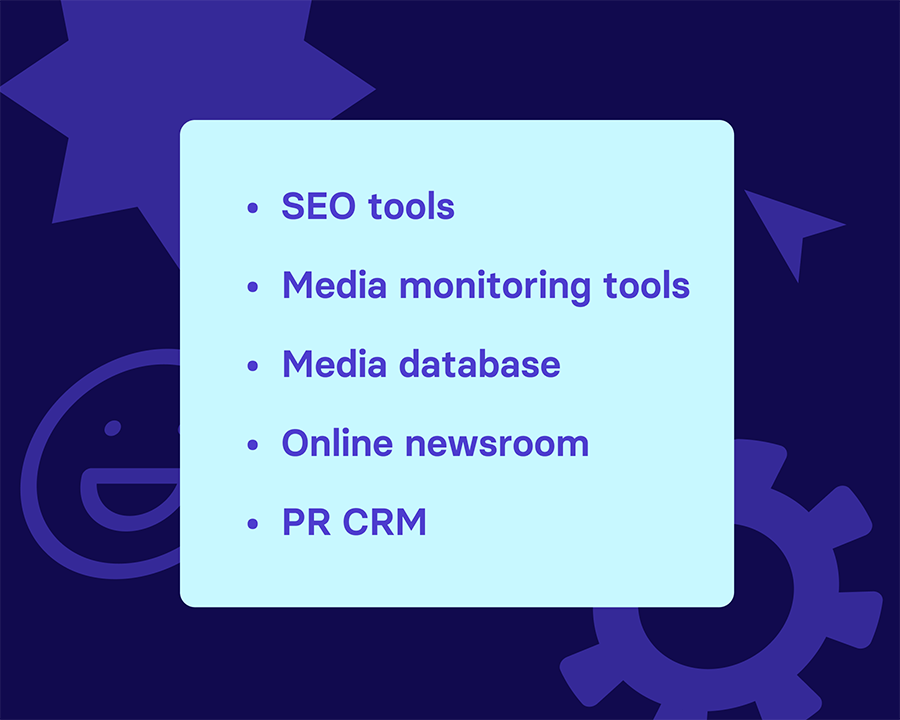Have you heard the buzz? There are so many conversations about the challenges of tech PR in discussion groups these days! That’s because tech public relations is one of the fastest-growing (and let’s face it - lucrative) PR niches out there.
This latest boom in tech PR (and a growing need for startup PR in general), means red-hot PR competition. New tech innovations are being introduced to the market on a daily basis, launched by both nimble startups and well-established product and service companies alike, all vying for investor funding and that coveted IPO. Along with this surge in technologies comes a need for PR coverage that positions tech companies for their next phase of growth.
PR for tech companies remains a specialist’s field for good reason. The fundamentals of PR remain, but strategy can be very different depending on where the company is in its business cycle. PR professionals can adapt to this industry, however, and make incredible things happen. In this article, we’ll explain how to approach tech PR clients.
We’ll look at the following:
- How Tech PR is Different
- What Tech PR Delivers
- The Tech PR Launching Pad
- Creating a Tech PR Strategy
- The Tech PR Tools
How Tech PR is Different
Tech PR requires a certain level of technical expertise. You can’t begin to promote a tech product until you can make sense of the industry, its most prominent media outlets, and its language. To compete, you’ll need to educate yourself on your client’s specific sector so you can translate their message to the appropriate journalists.
Tech storytelling
Turning a technical spec sheet into a press release is not the way to go. Instead, you need to turn tech language into marketing language, or selling language. The most experienced tech PR professionals spend time not only with the product team, but with the sales team as well. They know that the sales team discusses the product in broader terms that highlight the product or service benefits, and that is exactly where PR messaging should start.
Agile tech PR efforts
You’ll also need to be prepared to be agile with your tech PR efforts. The tech industry changes more quickly than others, and new and disrupting technologies will inevitably emerge during your PR campaigns. You'll want to stay focused on your strategy, but make tweaks in your story angles to stay timely and relevant as the landscape changes. Most importantly, keep an eye on the competition through media monitoring.
These guides will help you decide which media monitoring tool to choose and compare their prices if you're currently looking for one.
A Field of Opportunities
While many PRs stick with large corporate tech companies, agencies shouldn’t overlook smaller tech companies. PR for tech startups is a special skill that’s in high demand, and you may find you prefer the creative freedom, the ability to take PR risks, and the reduced need to navigate corporate approvals.
You gain the ability to pivot quickly when one tactic doesn’t work, and you often get to focus on one niche media group that you can develop deep bonds with, versus tackling a broad consumer product that can be covered in thousands of outlets.
💡 Expert opinion
We also asked for the opinion of our #PRChat guest — Katerina Antonova, Founder and CEO at Aeris PR Agency, who has profound experience in tech communication. Here is what she says about the peculiarities of doing tech PR:
“There is a big difference between PR for a tech startup and, for example, a beauty brand. PR for different industries each has its own features. To work PR in tech, you have to understand the tech industry, know the journalists and editors covering this topic, and be aware of trends and topics that are being discussed by its community. Tech startups need to create trust and credibility because reputation in this industry is crucial.
The tech industry is all about innovative services and new technologies, which all have to be explained to the public. What it is about and how it works and why it is relevant right now. You need to know how to explain complicated and sometimes boring technical things in a clear and simple manner.
Also, what sets tech apart from other market niches is its very high development pace, and we have to adapt to that in order to stay current.”
What Tech PR Delivers
PR in tech industries comes with specific expectations, almost all of them centered around introducing a new product to the market and growing a company quickly. Tech business is focused on most or all of these business goals when hiring a PR agency:
- Securing funding for their next phase of growth.
- Growing their user or customer base.
- Scaling their business with measurable results that can be reported to investors.
- Launching tech PR campaigns for their latest product or service.
- Increasing the company’s valuation through sales growth trends.
- Attracting new investors.
- Taking steps towards an eventual company IPO.
- Attracting and retaining the top talent in their industry.

That’s a pretty tall order, isn’t it? But there’s no need to get overwhelmed by the full PR needs. Fortunately, a strong tech PR team and automated PR software will keep you right on track in meeting your client’s tech PR needs, especially when dealing with the quickly-evolving tech startup PR arena.
The Tech PR Launching Pad
First things first. When taking on a new tech client, you need to start with the basics to ensure all of your PR bases are covered. Your first task should be to add your client to all applicable tech platforms and directories, like:
- CrunchBase
- AngelList
- Product Hunt
- B2B directories; like Clutch, Siftery, Capterra, G2
- Betalist
- Trustpilot
- Wikipedia
Because this is where tech companies are expected to be found. Investors, editors, and customers all expect to find up-to-date information on tech companies on these websites. So make this your first step.
Creating a Tech PR Strategy
As with all PR clients, you’ll want to ensure your service contract outlines that the client’s leadership team will allow you to work directly with their in-house marketing and sales teams. This is how messaging will be aligned across all efforts, and it’s especially important in tech PR.
These initial conversations with in-house teams will become the foundation of your tech PR strategy and tactics. So together, walk through each of these talking points and document the team consensus on your strategic marketing plan.

✔️ Define your audience
Are you reaching out to a B2B or B2C audience? What buyer personas has the company identified? What is the product’s unique value proposition (UVP)? Keep in mind there are likely two audiences with all tech PR clients: the end user and the investors.
✔️ Clarify objectives
What is the next company goal? Is it to introduce a new product, or reposition the brand for its latest pivot? What stage of investment funding is the company in?
✔️ Identify channels
Which media outlets will deliver the greatest impact for this next phase? Should social media platforms like LinkedIn be integrated into the strategy? Are there relevant tech influencers that relationships should be developed with?
✔️ Establish timelines and budgets
When will the product be ready for the market? Can the client provide some products prior to launch for editors to review?
✔️ Decide on who’s responsible
This is your chance to set clear PR expectations. If social media is involved, will that be monitored by your team or the in-house marketing team? Identify who will be the spokespeople for the company and schedule media training if needed. Schedule mock interviews with them so they can practice key talking points.
✔️ Craft your story angles
Here is where the tech PR fun begins! Work with the client to draft multiple story angles you can deliver to the media. You have several main themes to work with:
- Position the company leadership as thought leaders, through speaking opportunities and PR pitches on business performance lessons.
- Tell the company’s background story. Talk about the history of the founder’s journey to their product and the opportunity they saw before anyone else. Introduce the people who built the product and feel free to talk about those early product failures.
- Share detailed customer success stories. Focus on the key benefits to the customers and provide any statistics you can that show measurable results.
✔️ Prepare for a crisis
While we hope your client has no PR crises on the horizon, you should always draft a crisis management plan to have on hand when needed. This is even more necessary in the tech industry, where recalls, bad product launches, and data breaches can occur and quickly capture media attention.
The Tech PR Tools
You now have a solid PR strategy and are ready to jump in. If the PR tech niche is new to you, you should spend the bulk of your time cultivating your new media relationships. You can do this by providing valuable article info through research and quotes.
You can also jumpstart your media relationships by attending the company’s trade shows so you can meet editors and journalists in person. You might even try a soft launch with a few editors or industry analysts so you can get feedback and learn about the latest trends in the sector.
We mentioned PR automation software before for a good reason: you’ll quickly learn that PR tech work requires the management of a lot of moving parts. Just take a look at the recommended toolset to boost PR operations in tech:
- SEO tools to integrate target keywords into marketing copy.
- Media monitoring tools to see where your client (and their competition!) are getting coverage.
- A media database to find and track the contact information of your media contacts, from print journalists to industry influencers.
- An online newsroom where you can provide your media contacts with the latest press releases, product photos, spokesperson quotes and headshots, and company logos.
- A PR CRM so you always know exactly where you are at each stage of your media pitches.

You can find companies that offer these PR tools individually, but we always recommend the easy route and going with one PR platform that covers it all, like Prowly.
Here, we explain the biggest challenges PR pros face every day, and show best how to conquer them → “How to Use PR Tools to Solve Any PR Challenge”
You’re Ready for Tech PR
PR tech is a booming PR niche with a special set of objectives and tactics. However, if you haven’t entered this industry yet, know that it can be done by a team eager to learn and automated PR software that delivers an organized way to discover, contact, and track this exciting industry.

